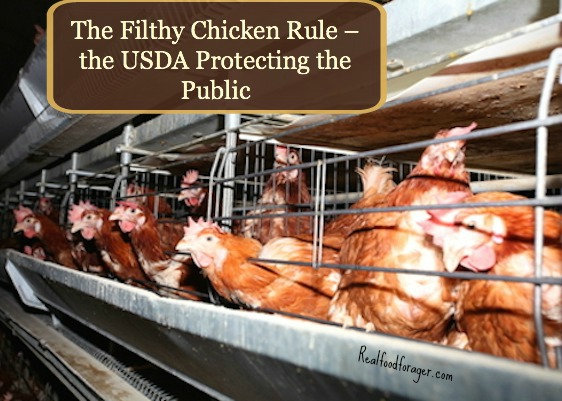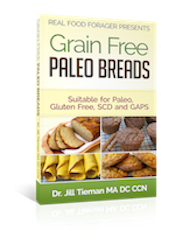Just when you thought the USDA was protecting you from food borne illness (not), they have come up with a plan that will surely cause more cases of salmonella and other pathogenic diseases, from the most deadly source of food poisoning cases – poultry factory farms.
Have you heard about the Filthy Chicken Rule? It was coined by Food and Water Watch, to describe the USDA’s scheme they call the Modernization of Poultry Slaughter Inspection.
In this USDA proposal, there are two things that will exponentially increase the probability that chickens will become even more contaminated than they already are by:
1 – dramatically reducing the number of government inspectors and use company workers instead to inspect.
2 – increasing factory line speeds from 140 birds per minute to 175 birds per minute.
What?
Are Corporations Not Making Enough Money from Factory Farming?
I guess not.
I guess the USDA feels it is appropriate to err on the side of caution to make sure factory farms make huge profits – since that is whom they are apparently protecting.
Wait a minute…
Isn’t the USDA supposed to PROTECT THE CONSUMER?
Organic Consumers Association calls it the Dead Inspector Rule. This scheme ensures that inspectors will miss a lot of sick birds, and potentially injure workers by setting the line speed too fast.
Additionally, will company paid inspectors (shills) actually report and remove sick birds?
Prisoners of Modern Commerce
Factory farm chickens are prisoners of modern commerce. They are held prisoner in tiny cages and fed antibiotics in order to fatten them up and to keep them alive in horrible, disease producing conditions.
Consumer Reports tested conventional factory farm chickens and found that 97% had bacteria that could make you sick.
According to an analysis of outbreaks from 1998 through 2008 by the National Centers for Disease Control and Prevention (CDC),
{There are}… more deaths attributed to poultry than to any other commodity.
If you are buying factory farm chickens, you need to be sure to cook the chicken to at least 165º F in order to kill bacteria.
When you eat out can you rely on restaurants to always do this?
More Troublesome
More troublesome is the fact that there are many different strains of salmonella and some of them are resistant to antibiotics. Antibiotic resistant bacteria are linked to at least 2 million illnesses and 23,000 deaths in the U.S. each year.
If antibiotic-resistant bacteria continue to spread, this could lead to deadly infections after routine surgery or even a seemingly harmless cut, because the current drugs that doctors prescribe will have lost their effectiveness completely.
We are already on that rough road with MSRA.
Worse than That
Even worse, once the chickens go to the meat processing plant, most are dipped in a chemical cocktail to keep bacteria and other pathogens under control.
Labeling isn’t required, so consumers have no idea that there are toxic chemicals on their meat. Chemicals such as chlorine, tri-sodium phosphate (normally used to clean cement) and hypobromous acid (used to clean swimming pools).
These chemicals are used to try to control salmonella and sterilize feces that might still be on carcasses because the production line speeds are too fast.
That’s now.
What happens when the line speeds up and there are fewer inspections?
It Gets Worse
The USDA has also approved a plan that would allow imports of processed poultry from China — a country with an extremely troubling food safety record. Learn more about the USDA’s plan to import Chinese chicken.
Imported chicken? Why why why?
More Worrisome
Even more worrisome is the fact in spite of the above described processing, Consumer Reports tested 4 of the large factory farm chicken brands that supply over half of all the chickens in grocery stores and found:
1 – Worrisome amounts of bacteria, even the chicken breasts labeled “no antibiotics” or “organic.”
2 – Almost none of the brands were free of bacteria.
3 – More than half of the chicken was tainted with fecal contaminants (enterococcus and E. coli) which can cause blood and urinary tract infections as well as other problems.
4 – About half of the samples tested positive for at least one multi-drug resistant bacteria and 11.5 % tested positive for two or more multi-drug resistant bacteria.
According to Urvashi Rangan, Ph.D., toxicologist and executive director of the Consumer Reports Food Safety and Sustainability Center,
At the moment, the only way to protect yourself from becoming sick is to remain vigilant about safe handling and cooking.
I beg to differ.
There is another way to protect yourself and your family.
Support local farmers that practice biodynamic farming. The chickens are raised in a humane and healthy way with access to pastures and sunshine on a daily basis.
This type of chicken has a better fatty acid profile than a chicken feed only grain, which is high in omega 6 fatty acids. Chickens feed on pasture will have more of the omega 3 fatty acids that are healthier.
These chickens are never feed antibiotics or growth hormones – they are living the life they are supposed to be living and will provide a much healthier product.
Where to Source truly Free Range Chickens
The best way to source humanely raised chickens is to join a buyer’s club and purchase chickens from a local biodynamic farm.
Contact a chapter leader of the Weston Price Foundation here for a local source.
Alternatively, this company sells chickens from biodynamic farms.
Another way to find sustainably-raised meat and dairy products is to visit the Eat Well Guide.
When you order from your local farmer, be sure to get a package of chicken feet and make some of my chicken feet broth from the bones of your biodynamic chicken and chicken feet!
It is criminal of the USDA to support regulations that make matters worse! We need a grassroots action to get them to understand that we won’t stand for this!
Take Action and Help Stop the Filthy Chicken Rule
Related Posts
Slow Roasted Chicken And Broth













